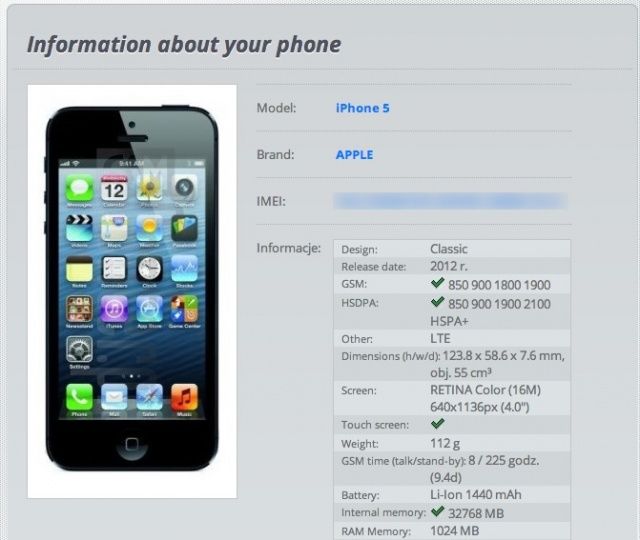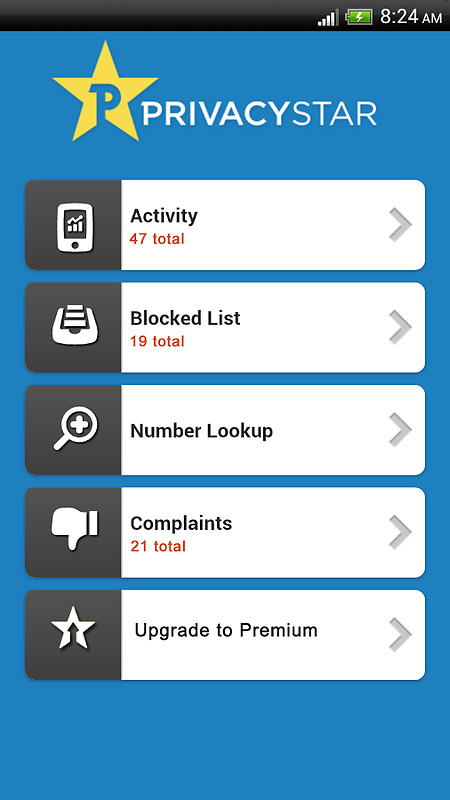Apple Device Lookup
Everyi.com > By Identifier > Apple Model Number. For your convenience, the Model Number of each iPod, iPhone and iPad is listed below. Complete technical specifications are merely a click away. Note that the Model Number identifier is not unique and is used for multiple devices. Nevertheless, this listing still can be helpful when trying to.
Check out MacBook Pro, iMac Pro, MacBook Air, MacBook, iMac, and more. Visit the Apple site to learn, buy, and get support. You must be at least 18 years old to be eligible to trade in for credit or for an Apple Store Gift Card. Not all devices are eligible for credit. More details are available from Apple’s Mac trade‑in partner. Nov 28, 2016 - When Apple announced an iPhone 6s battery replacement program last. But there's a quick and easy way to check if your device is eligible at.
Apple has registered a ton of MAC address ranges for its products. Does anyone know whether it's feasible to reliably identify which Apple product (particularly iPad, iPod, iPhone, and MacBooks) a particular device is in network traffic via specific MAC address prefixes? In other words, is there something about the MAC address of an iPad that is distinguishable from the MAC address of a MacBook, for instance?
10 Answers
No, sorting or determining a pattern in the MAC address isn't a feasible way to map to model of Apple product.
Over years of watching MAC addresses on networks as well as the explosion of devices on the iOS end of things, if there were a nice pattern, it would start showing in deployments with hundreds of devices.
For example, I have one Mac that has data on about 1,000 iOS devices that have been connected over time to that Mac while iPhone configuration utility was running. Looking at the data now, there are no clear patterns to help differentiate between the device types.
This also applies to Macs. Sadly, my data here is in the hundreds and not thousands presently. Yes - a string of MacBooks when ordered together will usually have sequential addresses (more so than sequential serial numbers in fact) - but over time, the iMacs seem mixed in with the Airs and the MacBook Pro.
It could be that there is some encoding present and no-one has stumbled across which bits are coded with model numbers, but a simple sort of the MAC addresses has the devices all jumbled up. Perhaps if you can find someone that runs the mobile device management software for a very large company or school district and see if they are curious enough to see if a larger data set would yield some better results for you.
I haven't seen a case where a Mac and an iOS device share the same smaller block of MAC addresses, but I can't even rule that out for you based on my experience running networks that log MAC address and are in a position to know what hardware is associated with which MAC address over the years.
My guess is the addresses are issued sequentially rather than by final destination. It would make sense to dole out parts of each region to factories that are expected to make 5 or 10 thousand devices in the next month and onle issue more once the existing addresses are consumed. If so, we might have better luck trying to bin the numbers by approximate manufacturing date rather than by where it ends up in a shipping product. Also consider on the Mac end, repairs often give a new MAC address to portables and even desktop Macs when the ethernet controller is replaced.
If you are simply needing to identify whether it is a Macintosh product or not you could try the this MAC address lookup service. It allows you to type in the MAC address, and it will tell you what the vendor name is. It is not likely to be helpful in terms of identifying specific vendors for programatic use, however it has worked for me in regards to finding if the machine is an Apple product.
UPDATE:
Aside from utilizing an internal database it is not likely that you will be able to do what you are asking. If you did decide to setup an internal database it may be prudent to utilize the serial number or another unique ID available for each machine.
Reply two years after asking, it is not feasible relying only on the Mac address.
Since you mention monitoring the network traffic,The best approach would be to listen Bonjour traffic (multicast dns).
By default, machines are called 'jannies-iphone.local', 'gregs-macbook.local', 'peters-imac.local'..
Bonjour is pretty talkative and generate noise for AFP, SMB, VNC, RAOP, DAAP and other services/protocols. I would suggest you to use 'Bonjour Browser' then script something with Tshark (Wireshark command line) to automatize the process.
Without remote scans, you can manage your devices by :
Apple Device Lookup
Running an agent (or profile) on each OS X and iOS devices to fetch 'sysctl hw.model' or its serial number. 'Mac Tracker' can help you tosee the different models of Mac and their spec and serial numberpattern.
Using Profile Manager, Configurator or any MDM solutions. (But this does not address your question).
Find iOS and OS X running on the network :
Also you could use a network tool such as nmap with the option -A, -O, or -sV (Active Fingerprinting and service version) and filter Apple mac addresses prefix using a network anylizer.
Looking at the service version, port numbers [tcp 65xxx being a iphone-sync port, tcp 548 AFP (OS X)] will help you to determine OS X version and Hardware but not precisely.(You will not be able to differentiate, iPad, iPhone, and iPod, or Mac Model).
I was working for a worldwide known embedded computer developper/producer. As Dennis sayd (and I guess You allready known) the first three octets of six from the MAC address are for vendor's identification. Therefore u can buy adress ranges from IEEE. After them you have to guarantee as developper/vendor from your own hardware that this second part is so that the complete 6 byte MAC is entirely unique in the whole wolrd (without regarding missuse and MACspoofing for security issues later on). For lifetime of your production activity You have to guarantee that inner your 3 bytes vendor code, each code has a really unique range of adresses for second half of MAC.
How to realize that in a continuous production?
We ve done this by assume a new adress (n+1) from our range n in{0.16'777'215} per each MAC Vendor Adress part, where n was the last given address AND the concerning unit has succesful absolved the final function test (eg. was responding in a Ethernet test bank check).
What's MAC Address and what is it identifying?
In fact, the MAC Adress is for network layer protocoll (2nd Layer in ISO/OSI model) and used for IEE802 protocols as Ethernet,WLAN, Bluetooth and others and refers ONLY the Network Card! NOT the machine behind! So the 2nd part of MAC is nothing else then serial production number from network chipset respectively board (e.g. WLAN or bluetooth internal extention is a small smd- printed cirquit upset on the mainboard and also serviceable).
Examples
Apple Mobile Device
I have no Apple hardware arround me. But I made a check with Samsung hardware. Here are my results: (I refer only the vendor part of MAC)
for Samsung Galaxy S II running latest Android 4.0.4
04:46:65 WLAN (802.11) this refers to Murata Manufacturing Co. as chip-producer 56:b2:a4 GSM advanced (IP over Cellphone network), not refered in my MAC-vendor list
Samsung Galaxy GT-P5110 running latest Android 4.0.4
50:01:BB WLAN (802.11) not refered in my MAC-vendor list
Hope to give some aspect-related answers to your question.

I am not aware of any official list, but you can try to compile one the way AppleSerialNumberInfo.com has done with serial numbers. You might even approach them to do it for you. A quick check of a few devices suggests it might be possible, as the MAC prefixes I looked at did vary by model.
Of course it will never be foolproof, as devices such as routers and switches (as well as virtual machines) routinely allow you to easily set their MAC addresses to anything you want to.
The first half of a MAC address identifies the vendor, the second half doesn't necessarily correspond to anything.
The current Google logo was launched on September 1, 2015. The logo now has a new tailor-made sans-serif typeface. It has softer colors and bears a resemblance to the logo of Google's parent company Alphabet Inc. Google logo url. First things first: you'll need our permission to use our logos or trademarks. We receive a lot of requests from people who want to add a touch of Google to their. Sep 1, 2015 - The new Google logo is still a wordmark, but it's now using a sans-serif typeface, making it look a lot more modern and playful. The colors are also softer than they used to be. The logo bears a bit more resemblance to the logo of Google's new parent company, Alphabet, as well. If Google provides written requirements (size, typeface, colors, etc.) to you at the. Use only Google-approved artwork when using Google's logos. AdMob; admob; AdSense; adsense; AdWords; adwords; AIY; aiy; Android; Android Word; android-word; ARA; ara; Assistant; assistant; AutoDraw.
No. it's not possible to differentiate between different products of Apple just by their MAC address.
Jab tak song download. You can, however, lookup hundreds of MAC addresses very conveniently - simply paste a list of MAC addresses and it will spit out the manufacturers.
This is what I do. Using 'nmap' you can find out what the device is based on the OS or the device type. (See Below).
Brought to you by OpenSource911.com
things like a netscaler can differentiate by the browser whether it deals with an smartphen of laptop/tablet/book etc.
It is very unlikely that you are dealing with MAC addresses only, you will almost definitely have an IP address for that device as well. When you do, you can fingerprint the DHCP behaviour to a level of accuracy that is quite scary. Most WiFi access point vendors do this. Visit [ https://fingerbank.org ] for details on the database.
You must log in to answer this question.
Not the answer you're looking for? Browse other questions tagged iphoneipadmacnetworkwifi .
I recently purchased a 'refurbished' Airport Extreme Gen. 5. It came with no documentation and hermetically sealed in plastic, secured in bubble wrap and foam peanuts (Oh no. The enviro weenies will after this shipper.) I was concerned that I even received a gen. 5 let alone a refurbished unit. For what ever reason, Apple chose not to emblazoned the model number on their devices. Not even on the label near the serial number.
So I went on the hunt as to how I can verify that this is an A1408 Airport Extreme. After about an hour poking around on the Internet I finally found this site. There may be others but this one worked for me.

You can enter the serial number of any Apple device and find all the details about your specific unit.
Cheers,
YM
MacBook Pro, Mac OS X (10.6.8), 4GB installed
Posted on
